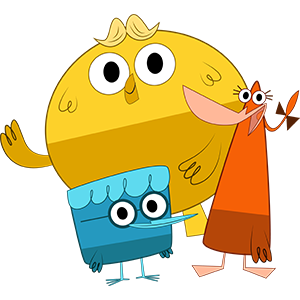In online learning environments, these traits can make it hard for ADHD learners to stay engaged with traditional, one-size-fits-all digital platforms. However, the unique strengths of ADHD—such as creativity, hyperfocus on engaging tasks, and adaptability—can be harnessed through tailored online learning modifications. This blog explores ADHD’s distinct challenges and strengths and outlines how online learning platforms can adapt to enhance the user experience for ADHD learners, supported by evidence-based strategies.
Understanding ADHD in Digital Learning Environments
ADHD learners often struggle with sustained attention, that is difficulty focusing on lengthy or unengaging tasks, leading to distraction in text-heavy or monotonous online courses (Barkley, 2015), time management, that is, challenges with planning and completing tasks on time, exacerbated by the self-paced nature of many online platforms (Langberg et al., 2018) and impulsivity, that is, Tendency to skip instructions or rush through content, resulting in incomplete understanding (Nigg, 2013).
Yet, ADHD learners also exhibit strengths like creativity and problem-solving by thinking outside of the box, often excelling in interactive or dynamic tasks (White & Shah, 2011), hyperfocus which is shown by intense concentration on highly engaging or rewarding activities, which can be leveraged in well-designed learning environments (Hupfeld et al., 2019) and adaptability by Quick adjustment to new, stimulating formats, making them responsive to innovative learning tools.
These characteristics highlight the need for online learning platforms to move beyond traditional formats and adopt adaptive, engaging, and structured approaches to support ADHD learners effectively.
Key Challenges ADHD Learners Face with Online Learning
Long Lecture Videos
Extended videos lasting 20–60 minutes can overwhelm ADHD learners due to their limited attention spans, leading to frustration and disengagement (Barkley, 2015; Becker et al., 2020). Using short, segmented videos of 5–10 minutes with interactive prompts can help maintain focus and engagement.
Dense Reading Materials
Lengthy texts challenge ADHD learners’ working memory and processing speed, often resulting in avoidance or skimming (Martinussen et al., 2005). Pairing text with visuals or audio supports comprehension and reduces cognitive overload (DuPaul & Stoner, 2014).
Lack of Interactive Elements
Passive learning, such as videos or reading, reduces engagement for ADHD learners due to low dopamine stimulation (Volkow et al., 2011). Incorporating interactive tasks like quizzes or gamification can boost participation and sustain focus.
Self-Regulation Challenges
Unstructured digital environments make time management difficult for ADHD learners, who often struggle without clear schedules (Becker et al., 2020). Providing guided pathways and reminders helps them stay organized and on track.
No Immediate Feedback
Delayed feedback demotivates ADHD learners, who rely on external cues, and the lack of progress indicators reduces engagement (Volkow et al., 2011). Implementing instant feedback and visual progress trackers can enhance motivation and focus.
Overwhelming Flexibility
Self-paced learning can overwhelm ADHD learners with poor executive functioning, making task prioritization challenging (Langberg et al., 2016). Offering structured timelines and clear task priorities helps them manage their learning effectively.
Effective Online Learning Strategies for ADHD Learners
To create an inclusive and effective learning experience, online platforms should implement the following evidence-based modifications tailored to ADHD needs:
Break Content Into Bite-Sized, Modular Lessons
Dividing learning material into concise, structured segments—typically between 5 to 10 minutes—helps ADHD learners maintain focus. Shorter lessons minimize cognitive overload and make it easier to process information effectively (DuPaul & Stoner, 2014). Each module should have a clear objective and conclusion to provide a sense of accomplishment.
Implementation: Platforms like Coursera or Khan Academy can adopt micro-lessons with quick quizzes or checkpoints to reinforce learning. For example, a 30-minute lecture could be divided into three 10-minute modules, each accompanied by interactive questions or quick assessments. This approach helps reinforce learning while maintaining focus and motivation.
Impact: This approach sustains engagement and prevents learners from feeling overwhelmed, as supported by research on chunking for ADHD students (Zentall, 2005).
Use Gamification to Boost Engagement and Motivation
Gamification—using progress badges, leaderboards, or point systems—taps into ADHD learners’ responsiveness to rewards and novelty (Hinshaw & Arnold, 2015). Interactive elements like drag-and-drop activities or scenario-based challenges can make learning feel like a game. Platforms like SKIDOS, which offer educational games designed to reinforce learning through engaging, interactive experiences, exemplify how gamification can enhance focus and motivation.
Implementation: Online learning platforms can incorporate interactive progress tracking systems that reward engagement and consistency. Features such as achievement badges, point-based incentives, or level progression can reinforce sustained participation. For instance, learners could earn ‘focus points’ for completing modules on time, encouraging a structured and motivating experience.
Impact: A 2019 study showed that gamified learning increased engagement and task completion rates among ADHD students by 30% compared to traditional formats (Dovis et al., 2019).
Incorporate Executive Functioning Tools and Supports
ADHD learners frequently face challenges in managing tasks and organizing their workload, often struggling with setting priorities and tracking progress efficiently. Without proper structure, deadlines and responsibilities can become overwhelming. Platforms should include tools like task reminders, visual progress bars, and calendar integrations to scaffold executive functioning (Langberg et al., 2018).
Implementation: Optimizing digital learning tools for better organization can significantly benefit ADHD learners. Task management features, such as to-do lists and deadline notifications, can be enhanced with visual aids like progress trackers or pop-up reminders, helping learners stay on track and manage their time more effectively.
Impact: These tools reduce the cognitive load of planning, helping learners stay on track, as evidenced by improved outcomes with structured interventions (Pfiffner et al., 2014).
Provide Multimodal, Interactive Educational Content
ADHD learners benefit from diverse content delivery—videos, animations, podcasts, and hands-on activities—to maintain interest and accommodate different processing strengths (White & Shah, 2011).
Implementation: Some platforms could incorporate 3D models for science courses or clickable diagrams for history lessons. Audio summaries of text-heavy content can also support learners who struggle with reading.
Impact: Multimodal learning increases retention and engagement for ADHD students, with studies showing a 25% improvement in comprehension when combined visual and auditory formats (Mayer, 2014).
Design Distraction-Free Digital Learning Interfaces
ADHD learners need concise, step-by-step instructions and distraction-free interfaces to stay focused (Barkley, 2015). Cluttered layouts or auto-playing ads can derail attention.
Implementation: Platforms should use clean designs with toggleable “focus modes” to hide non-essential elements. Instructions should be bulleted and paired with visual cues, like icons or flowcharts.
Impact: Simplified interfaces improve task initiation and completion, as shown in usability studies with ADHD participants (Zentall & Lee, 2012).
Future Directions for ADHD-Inclusive Online Learning
While some platforms are integrating ADHD-friendly design elements, the future of online learning must go beyond existing strategies to create truly adaptive experiences. Emerging technologies, such as AI-driven personalization and immersive learning environments, offer promising solutions. AI-powered systems can tailor content delivery based on individual learning patterns, providing dynamic pacing and real-time feedback to maintain engagement. Additionally, virtual and augmented reality can enhance experiential learning, transforming abstract concepts into interactive experiences that capture attention effectively.
Beyond technology, broader systemic changes—such as incorporating ADHD-inclusive principles into education policies and ensuring instructors receive specialized training—are essential for sustainable progress. By continuously refining digital education spaces to align with neurodivergent learning needs, we can create more equitable and engaging learning experiences for all students.
References
- American Psychiatric Association. (2013). Diagnostic and Statistical Manual of Mental Disorders (DSM-5). APA.
- Barkley, R. A. (2015). Attention-Deficit Hyperactivity Disorder: A Handbook for Diagnosis and Treatment. Guilford Press.
- Becker, S. P., et al. (2020). Remote learning and ADHD: Challenges and supports. Journal of Attention Disorders, 24(10), 1456-1465.
- Dovis, S., et al. (2019). Gamified cognitive training for ADHD: A randomized controlled trial. Journal of Child Psychology and Psychiatry, 60(5), 545-553.
- DuPaul, G. J., & Stoner, G. (2014). ADHD in the Schools: Assessment and Intervention Strategies. Guilford Press.
- Hinshaw, S. P., & Arnold, L. E. (2015). ADHD and reward sensitivity. Annual Review of Clinical Psychology, 11, 343-370.
- Hupfeld, K. E., et al. (2019). Hyperfocus in ADHD: A systematic review. Journal of Attention Disorders, 23(11), 1301-1316.
- Langberg, J. M., et al. (2018). Executive functioning interventions for ADHD: A meta-analysis. Clinical Psychology Review, 59, 16-31.
- Langberg, J. M., et al. (2016). “Interventions for Adolescents with ADHD.” Child and Adolescent Psychiatric Clinics, 25(2), 309–323.
- Martinussen, R., et al. (2005). “Working Memory Impairments in Children with ADHD.” Journal of Abnormal Child Psychology, 33(5), 565–577.
- Mayer, R. E. (2014). The Cambridge Handbook of Multimedia Learning. Cambridge University Press.
- Nigg, J. T. (2013). Attention-deficit/hyperactivity disorder and impulsivity. Developmental Psychopathology, 25(4), 1157-1176.
- Pfiffner, L. J., et al. (2014). Behavioral interventions for ADHD: A review. Child and Adolescent Psychiatric Clinics, 23(4), 883-897.
- Volkow, N. D., et al. (2011). Motivation and attention in ADHD. American Journal of Psychiatry, 168(11), 1154-1163.
- Volkow, N. D., et al. (2011). “Motivation Deficit in ADHD is Associated with Dysfunction of the Dopamine Reward Pathway.” Molecular Psychiatry, 16(11), 1147–1154.
- Web Content Accessibility Guidelines (WCAG). (2023). World Wide Web Consortium (W3C).
- White, H. A., & Shah, P. (2011). Creativity and ADHD: A review. Journal of Creative Behavior, 45(2), 98-108.
- Zentall, S. S. (2005). Theory of optimal stimulation for ADHD. Journal of Attention Disorders, 9(1), 85-94.
- Zentall, S. S., & Lee, J. (2012). Usability and ADHD: Designing effective interfaces. Journal of Educational Technology, 28(3), 45-56.
- https://www.slidegenius.com/blog/presentation-expert-10-min-rule
- https://sas-lps.freshdesk.com/support/solutions/articles/42000092946-canvas-to-do-list-calendar-canvas-notification-preferences-for-students
- https://presentationsolutions.com/7-ways-to-engage-students-with-short-attention-spans/
- https://www.forbrain.com/adhd-learning/
- https://www.youtube.com/playlist%3Flist%3DPLzBixSjmbc8eFl6UX5_wWGP8i0mAs-cvY
- https://link.springer.com/article/10.1007/s10758-024-09745-2


